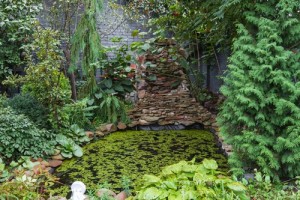Posts Tagged DK Landscaping
Layouts and Landscaping Small Backyards
They may be diminutive in size, but small backyards can be designed and landscaped in much the same way as their larger counterparts. From a quaint cottage-style yard to a modern, minimalist look, landscaping small backyards works best when you remember to design in square inches, not feet. In addition to this also use imaginative techniques such as creating multiple focal points, and use a varied selection of plants and shrubs. While backyards with limited space present a challenge, there’s nothing to prevent you from creating a cozy and charming retreat that can also work for family entertaining. To design a truly outstanding small backyard, follow these basic design and layout principles.
Inches, Not Feet
While most landscaping is planned out by the square foot, backyards with small footprints should be designed utilizing square inches, because fitting the amenities and plants you want in a tiny space requires a very precise layout. A mere two inches can make or break your opportunity to expand a raised planter wall to seat wall width; and just a six-inch difference here or there will determine whether you can have features such as ponds, fountains or fire pits.
Use Multiple Focal Points
Probably the biggest design challenge with small backyards is the lack of space to create that one standout focal point you often find in larger backyards. The solution, then, is to create many smaller, surprising focal points throughout your yard. Stone, ceramic, glass or metal accent pieces -new or vintage – can be arranged in such a way that they create an element of delight when discovered. For a distinct look, stay away from mass-produced items and make your small backyard uniquely yours by searching for one-of-a-kind pieces of garden art. For maximum effect, place your garden art amidst your plants, so they look as though they’ve always been there.
Don’t Stop at Green
Place bold and bright plants and flowers at the front of your small landscape so that they are the first thing to catch the eye upon entering the yard. They’ll also make the rest of the backyard recede, resulting in a larger feel to the space. Use plants with lots of texture, and try putting in a few large-leaf plants – they work wonders at changing the scale of small backyards.
Create Small Discrete Zones
As counterintuitive as it may sound, dividing a small space can actually make it seem larger. Try a tall hedge, fence, wall, or shrub to create a partition. Place furniture groupings and paths so that several small attractive and restful “rooms” are created.
Xeriscape Ideas for Small Backyards
Xeriscaping is one of the most popular landscaping options today, particularly in California, as it requires a minimal amount of water. In addition to reducing the need for supplemental irrigation, drought-tolerant landscaping can also be visually more interesting than other landscape options, and it will save you money. Xeriscape landscapes require very little turf, include plants that can withstand harsh elements and embrace designs that make small backyard landscapes really stand out:
- Use stepping stones and gravel to create a path and then fill in the side areas with native grasses.
- If you have stairs up to a deck or patio, fill them with gravel and native plants to add an unexpected touch.
- Choose low maintenance greenery that will thrive in your zone and don’t forget to opt for some colorful choices – the results can be stunning.
Bringing big design to small backyards is a great way to create a space for family and friends to dine and play. So contact us for consultation. Don’t be surprised if it becomes everyone’s favorite place to gather!
Garden Design for Dry Shady Gardens
When you’re looking to improve the landscape around your home or business, dry areas with shade can be tricky when it comes to garden design. Luckily the modern practice of xeriscaping has provided many solutions that can be used to get a beautifully landscaped property even when planting in dry shade.
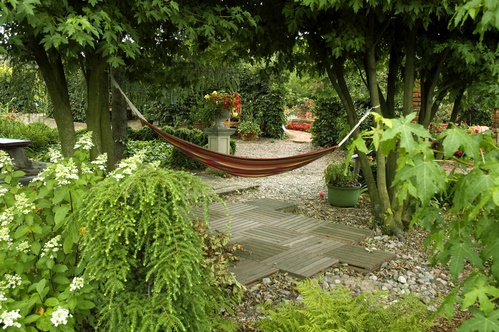
Basic Garden Design Principles
Any of the basics of good garden design apply to dry shady areas as well. You will want to think about how the area is going to be used, whether you prefer a casual or more formal style, and what your budget will be.
You will want to consider the size and shape of the plants and the visual lines they create. It can be helpful to start with the larger elements or focal points of your design, and then fill in the smaller details from there. Variety is necessary to create visual interest, but too many different colors, textures and plant species can create a chaotic look that lacks cohesive design. A common element such as a particular species of plant or a recurring color can help tie different areas together into an overall design.
For a successful dry shade garden design considering the water supply is vital. This is where consulting a landscape professional can be especially helpful. They will have ideas for making the best use of naturally available water. They may recommend grading an adjacent area to improve drainage, diverting extra water to a drier area. Including rain water harvesting in your garden design or changing irrigation methods may also be options.
The Importance of Plant Selection in Dry Shade Garden Design
One of the biggest decisions in garden design is choosing plants. You can get a garden design that is practical, unique and aesthetically pleasing, even in dry shade. It may limit your options a little more than having perfect growing conditions, but there are still plenty of plants to choose from. Skeptical? Check out this large list of plants for dry shade or this amazing list of native California drought tolerant plants. Many of these species grow just fine in shade. The growing popularity of xeriscaping means there are more plants available to homeowners and landscape professionals that tolerate dry conditions. Native plants will also grow better in dry shade since they are already adapted to local conditions.
One of the most useful garden design practices for dry shade is grouping together plants with similar water and nutrient requirements. Plants will not have to compete with each other to get what they need and will be more likely to thrive. Reducing the amount of turf lawn in a dry shady area or using grass varieties that require less water can also be helpful.
Soil Preparation is Key
When it comes time to make your new garden design a reality, soil preparation is especially important. The water and nutrient requirements of the new plants and condition of your existing soil will determine your exact course of action. In general, adding organic matter such as compost may be necessary. This will help your dry soil retain water and increase the nutrients available so your plants can thrive. Mulch also serves the same purpose and additionally deters weeds. Using these together will give your new plants the best chance to establish a good root system and promote growth.
While there are lot of things to consider in good garden design, the effort can save property owners money in the long run by reducing fertilizers, water, and maintenance. Get help with your landscape design and maintenance needs. Contact us today!
7 Gorgeous Flowering Shrubs for Shade
A shady yard doesn’t have to stop you from having a gorgeous, lively landscape. Flowering shrubs that thrive without direct sun are a perfect choice for jazzing up your landscape, and there are many varieties to choose from. Here are our top 7 choices for flowering shrubs that work well in Zone 9:
Oakleaf Hydrangea (Hydrangea quercifolia species)
With its spikes of beautiful white flowers and distinctive oak tree-shaped leaves, this shrub attains an impressive height and width of six to 10 feet and is partial to moderate shade. In late summer, its blooms change to a pinkish purple, and come fall, the leaves take center stage and put on an impressive show of orange-red, purple and brown, which lasts well into winter.
Rhododendron (Rhododendron species)
A shrub with its own fan club, there are more than 900 species of the Rhododendron. Most grow to a height and width of eight to 10 feet, bloom in late spring, and then present attractive foliage after that. This is the shrub to choose if you’re looking for colorful shade flowers – and with all the different varieties on the market you’ll have no problem finding your favorite color.
Serviceberry (Amelanchier species)
Another shrub with multiple varieties to choose from, you’re sure to find one that meets your yard’s aesthetic needs. The company running serviceberry is a compact four to six-foot shrub that’s perfect for smaller landscape layouts. A year-round winner, blooms debut in the spring and edible berries make a June appearance. Those who love low maintenance shrubs will love that it requires little pruning.

Japanese Kerria (Kerria Japonica species)
Slow to start but followed by rapid growth, this three to six-foot shrub is the one to choose for year-round color. Bright green leaves that appear in summer last through most of the fall, when attractive yellowish green or bright green stems appear to brighten up your winter landscape. Gorgeous, bright yellow blooms make a spring appearance.
Virginia Sweetspire (Itea Virginica species)
With vivid red leaves that last well into the fall, these four to five-foot shrubs burst with fragrant summer flowers and are extremely resistant to disease or insect problems. The Little Henry is a popular choice that gives better-known shrubs such as the burning bush a run for their money.
Red Chokeberry (Aronia Arbutifolia species)
Stunning crimson leaves in the fall and bountiful red berries that brighten up even the drabbest of winters, these shrubs grow from six to 10 feet high. The red chokeberry is a resilient shrub that does well even in poor soil, and it tolerates both wet and dry conditions. Glossy summer foliage complements the small white or red-tinged blooms that make their appearance in the spring.
Sweetshrub (Calycanthus floridus)
A versatile classic, this moderate-shade shrub continues to gain popularity due to its xeriscaping properties. It works well in dry to damp soil and grows from four to six feet tall. The sweetshrub’s maroon flowers bloom from spring to summer and are often highly fragrant; the leaves on these shrubs have a coarse texture. If you have a yard that sees frequent visits from deer, this is the shrub for you.
Finding just the right shrubs to plant in the shady areas of your landscape may seem like a challenge, but as these selections show, there are plenty of varieties to choose from. Whether you choose one particular species as a show-stopping focal point or mix and match several kinds, these recommended shrubs should bring some beautiful color and life to even the most sun-deprived areas of your yard. Contact us for consultation on your gardening project.
Planning and Maintaining a Shrubbery
Rock gardens and shrubberies might be the two best ways to add dimension to your landscaping efforts without breaking the bank or giving yourself more work down the road. Just like a rock garden, shrubberies are coming back in style!
Shrubberies are actually easy to maintain and take care of as well. Shrubs are technically woody plants that are far shorter than most trees yet have a network of stems that can really liven up a backyard or add a little privacy to your home’s front facade.
Flowering broom shrubs and rhododendrons even look beautiful in their own right and don’t need too much support from your annuals and perennials to enliven your home.
That said, a lush lawn never hurts, so if you need help in that department DK Landscaping is here to lend a helping hand. DK Landscaping can also help with irrigation.
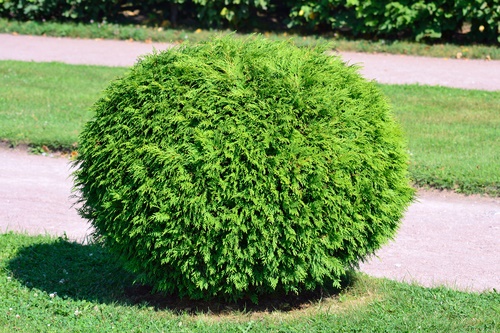
Planting a Shrubbery on Your Property
Shrubs are normally under ten feet in height and can either be evergreen or deciduous. This means that you can expect to find two classes of shrubs – one of which loses its leaves every autumn and then grows them back come springtime (deciduous) and the other kind of shrub retains its leaves on a year-round basis (evergreen).
- Leaving Room to Grow
Two other factors that you need to consider right off the bat is the maturity of the shrub that you’re interested in and, secondly, making sure that that shrub has enough room to grow without crowding out its neighbors.
The maturity and species of the shrub you go with will go a long way in determining how much space you need between each shrub and whether you’re letting in too much (or too little) sun to all of the shrubs you’ve planted as they go along in their growing cycle.
As an example, a shrub that’s much more bush-like and grows vertically like a arborvitae will require less sun, root space, and maintenance since it’s an evergreen and its stems don’t tend to blossom horizontally.
Bamboo palm or barberry, on the other hand, are actually quite low to the ground and need a little room to blossom out horizontally, so you’ll want to leave adequate space between each one and enough daylight so that the sun can reach down and nourish each individual shrub.
- Dig a Wide Hole
After you’ve picked out which shrub goes with the surrounding flowers and accessories in your yard, you need to transplant your shrubs and get them into the ground safely.
Digging a hole double the width of your shrub’s root ball is a good way to ensure that the roots get nourishment. After you’ve dug your hole then make sure to jostle the soil around slightly so that you’re not dealing with packed soil and your shrubs can continue to get nourishment.
- Transplanting the Shrub
When your hole is dug, carefully lower the shrub into place and put soil around the base. Then you’re going to want to spread out some mulch at the shrub’s base – just make sure that you go no more than six inches deep with your mulch.
- Regular Maintenance and Watering
Shrubs grow best in moist conditions that avoid too much saturation.
This means that regular watering from March to August in four-season climates should, in conjunction with some help from the sun and mother nature, provide most of the nourishment that your leucadendrons, rhododendrons, buckthorns and butterfly roses need to flourish.
An irrigation system is one of the best ways to prevent water waste and over-watering. For more on shrub maintenance and irrigation, contact DK Landscaping’s specialists today.
Building a Rock Garden: Everything You Wanted To Know
Rocks gardens, sometimes called alpine gardens and less commonly rockeries, are structures made from stones, rocks and boulders that you can build around your garden populated with perennials and annuals to really set it off.
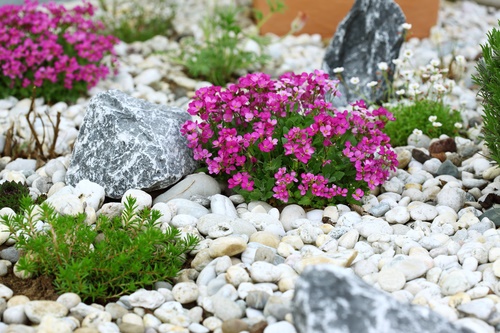
Rock Garden: What You Should Know
Usually rock gardens are role players or a kind of supporting cast for the main players that are your perennials, biennials and annuals.
The exception would be some Zen gardens in Japan that are designed almost exclusively from rocks, boulders and sand and designed to open the doors to enlightenment…but for now we’ll keep both feet squarely planted in the real world.
- Why Create a Rock Garden?
A lot of homeowners want to know right off the bat why they should be investing their time and energy into a rock garden in the first place.
That’s a great question and the answer really boils down to aesthetics and practicality. On the aesthetics point, rock gardens can lend a rugged air to your garden and make a very natural complement to your roses and annual flowers.
The other side of the coin is practicality: Rock gardens make a lot of sense if you’re working with an area that hards to reach with a lawnmower and provide regular maintenance to.
Many homeowners also consider putting up a rock garden to make a clearer demarcation line between an outdoor patio area, mulch and their garden proper. This really lends a lot of perspective by creating a more dynamic environment and allowing you to naturally get a wider color palette into your backyard.
- Where to Plant Rock Gardens?
You definitely want to select the right rocks and stones for the job when it comes to creating a rock garden that naturally allows you to find the optimal balance between earth tones and flowering brilliance.
For instance, if you have a lot of outdoor space in your backyard and a slight undulating up (or down) that might call for a staircase comprised of stone slabs or a tiny pebble walkway, then you could try something like this to lend more perspective and work with the existing elements.
You can even light the way with sconces along your pathway and combine stone slabs with more petite rocks forming your walking path. A few low maintenance yet vibrant perennials like dahlias and creeping thyme can work great running along the side too.
If you’re dealing with a really steep slope, then working in some larger rocks or complementing preexisting boulders can make a great retaining wall or framing device for a rock garden down below. A combination of flowers, shrubs and chips can set things off underneath.
You might also try erecting a rock garden near hard-to-reach areas running along a fence or hilly areas as these really are the perfect excuse for building up a rock garden and turning lemons into lemonade with your next outdoor project.
- Can I Still Go Zen?
You absolutely can still incorporate aspects of a traditional rock garden into your next backyard project!
The Zen Temple of Ryoanji means The Temple of the Dragon at Peace, and it’s easy to see how it got that name: Using open space to its advantage, Zen rock gardens are peaceful reposes and typically only call on a few rocks, pebbles and moss to achieve their tranquilizing effects.
To create your own Zen rock garden use edging stones, pebbles and prune your plants to fit the aesthetic you’re going for. For help getting there, contact us the gardening professionals.
Flower Bed Ideas – A Few Good Tips You Should Follow
Flower beds are one of the most convenient ways of sprucing up your outdoor decor and beautifying your entire yard.
Planting a flower bed is also a labor of love for millions of homeowners who already have the knack (and experience) for it; for those who don’t, the rest of this post if for you.
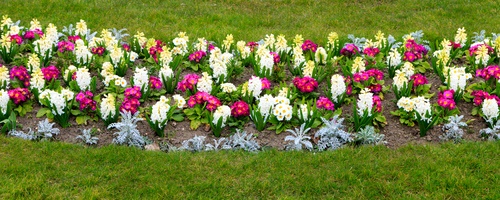
And if you’re still worried about your garden or you feel like your entire yard could benefit from aeration, then don’t hesitate to contact us your lawn experts. Now, let’s get started:
Tips for the Perfect Flower Bed
The perfect flower bed brings together form and function by applying a few simple tips in order to create a whole that’s greater than the sum of its parts.
- Focus on Framing
Part of the “form” part of creating the ideal flower bed for your home is going with a melange of perennials, annuals and shrubs for variety and framing.
In the same way that what’s in the background on a stage set can help to frame all the action going on in the foreground, you want a “framing device” in the back of your flower bed to draw your eye into the action.
A good rule of thumb is to plant tall perennial plants in the back of your garden to get the most out of everything going on upfront.
If you’re on a tight budget or you want to make a simpler landscaping project for yourself, then you can always put shrubs behind your perennials and annuals as well.
- Blend Perennials and Annuals
Annual flowers cycle through the germination, seeding, flowering and expiration process in one single year whereas perennials are able to grow from one year to the next with an off-season of dormancy in the winter.
The good news is that perennials like roses, daylilies, and peonies tend to play nice with annual flowers like marigolds and zinnias when it comes to finding the right balance between earth tones and more vibrant colors for your home garden.
- Combining Earth Tones and Vibrancy
In particular, the pink of a blossoming peony tends to work beautifully with the vibrant red of most roses. Marigolds and zinnias can also work well together if you’re looking to combine more tropical orange and yellow tones into your next flower bed.
Zinnias are actually easier to cultivate than most annuals and come in a myriad of colors that can make any garden really pop and dazzle guests.
You can find zinnias in purple, crimson, rose and scarlet to suit your tastes and make a flowing color combination with actual roses or even peonies when it comes time to get going.
Putting on the Finishing Touches
Once you know the kind of look that you’re going for and how to frame it with shrubs and/or tall perennials, then you want to move onto decorating fences or surrounding wall structures.
For this the beautiful pink and purples of an annual flower like the climbing snapdragon or greens, purples and yellows of passion flower can work very well.
Peony and roses upfront with climbing snapdragon or passion flower snaking along overhanging structures are an awesome want to frame your garden as well as beautify your home and complement your other landscaping efforts.
For help with aeration, irrigation, gardening or regular landscaping maintenance, or just to find out more tips like these, get in touch with DK Landscaping today.
Landscape and Garden Design Tips For New Homeowners
Landscape and garden design is top priority as you’re excited about your new home. You can’t wait to finish decorating and furnishing every space in your home, including your lawn and garden. However, when you first start considering what the perfect layout for your garden would be, the options and work involved can seem overwhelming. Fortunately, you can simplify the entire garden design process by understanding how it works. In order to get your landscape and garden design right, keep the following basic tips in mind:
Don’t Brainstorm Your Landscape and Garden Design Ideas in a Vacuum
One of the biggest mistakes you can make with garden design is to sit in an empty room and try to come up with ideas. Successfully designing a garden requires inspiration; for this, there is inspiration all around you. In particular, there are three sources that you should pull inspiration from:
Nature — Naturally beautiful landscapes allow you to see how garden life can flow on its own with the right setup
Professionals — Looking at beautifully laid out parks, checking out professionally landscaped homes, and consulting with a landscaper are all great sources for landscaping ideas
Your neighborhood — Walking around your area and adding features from your neighbors’ garden designs that you do like — and avoiding the features that you don’t like — can really help you develop your own design, especially since the homes in the area will have some similarities to your own
Think Function and Form for Your Design
You want to be able to enjoy your outdoor space as your own little garden oasis. For this, you need to consider both form and function (you can’t create a garden oasis feel without the right design, but you can’t enjoy your garden oasis if your design hasn’t left you with any room to relax in it).
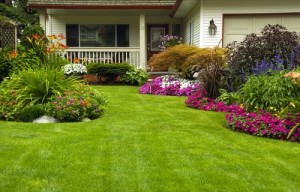
Create a Realistic Design Budget
Garden design budgets can vary drastically. If you approach your design haphazardly, you could find yourself turning your pockets inside out before the job is even half of the way done. On the other hand, you could end up missing on some outstanding garden design elements that you could easily afford if you approach the project cheaply with no real budget in mind. Avoid these types of issues by setting a realistic budget before you begin with your final plans. This way, you know what you can really afford to do. Also, because sudden expenses can occur, be sure to give your budget an extra 10%-20% emergency cushion.
Another issue to bear in mind is water savings and homeowners should set up a design that saves water and ultimately money. The state of California has laws in place in regards to water irrigation in order to protect and efficiently manage the county’s water supply.
Decide What You Can and Can’t Do On Your Own
Even if you have a green thumb, don’t simply assume that you can do it all. Installing certain fixtures, plants, etc into a garden the right way requires a team of professionals and the right equipment. Consult with a professional landscaper to discuss your options here.
Write Your Design Plans Down
Once you have all of your garden design plans in place, you need to make sure that you stick to them — and that you’re really going to like them. To this end, you should write everything down in two forms: prose and sketch. Writing everything you need down will keep your design plans in perspective with your budget and drawing a picture will give you a good depiction of how everything will actually look when you’re all done (the real thing doesn’t always match up with what’s in your head. If you can’t draw, then have a professional landscaper help you develop the image.
You’re Not Far From the Design of Your Dreams
Now that you know how to approach landscape and garden design, it’s time to get the process started. Reach out to us for a consultation as we’re here to help you get started.
Garden Design for Clay Soils
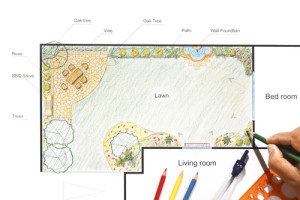 Clay soil is definitely an acquired taste for most gardeners, yet you might start swearing by clay soil once you hear some of the benefits listed below. First, though, what the heck is clay soil and how can it benefit your garden?
Clay soil is definitely an acquired taste for most gardeners, yet you might start swearing by clay soil once you hear some of the benefits listed below. First, though, what the heck is clay soil and how can it benefit your garden?
Clay Soil Vs. The Competition
Generally when you walk into a nursery, outdoors department or speak with a landscape maintenance company, you might be steered more towards silt soils or loam soils before clay. That’s because clay soil is composed of tiny plates or granules that can harden over time.
You’ve no doubt had the experience of plunking your shovel down into the ground, ready to get your garden going in the spring, and run up against clay. In spite of its hardness, though, clay soil is great for retaining moisture, nourishing your garden as well as retaining nutrients and fertilizers between individual clay particles.
Loam, relatedly, is a combination of clay, sand and silt and is very versatile, moldable and just easy for even inexperienced gardeners to work with.
Benefits of Clay
Part of the reason that loam soil is so moldable, to our main point, is that loam contains clay. The clay in the loam ensures that what you’re working with clumps into granules whereas the silt and clay components of loam help to retain moisture and nourish the plants in your garden.
Clay soil works wonderfully for annuals as well as perennial plants since the clay allows these plants to get a firm (and nourishing!) hold with their roots. The grip that perennials and annuals get with clay can withstand otherwise harsh humidity and temperature changes.
In short, clay’s fantastic as a garden design foundation since it provides a hearty root structure and allows plants to withstand harsh conditions. Moreover, you won’t need to water or fertilize as much with clay as with other soils. All good things.
Working with Clay Soil
Clay soil as a garden design foundation can accommodate a pretty wide range of shrubs, climbers, conifers and trees. Everything from popular conifers like ginkgo biloba and a deciduous evergreen like cotoneaster to rosa and fuchsia shrubs makes a great complement to clay soil.
To provide even more nutrients for these clay-compatible shrubs and conifers try adding a light mulch to your garden. Leafmold, composted bark and long manure work especially well with clay soil in terms of providing an easy-to-work-with mulch that does wonders for your plants.
Mulching Your Clay Foundation
When you actually get down to planting, mulching the plants up to three inches is a good idea for a few reasons.
Just a few inches down allows the right amount of moisture to hit your plants’ roots while tamping down weed growth and providing shielding from the elements.
One problem that people have with clay soil is that they sometimes overwater. Remember that clay soil retains water and moisture better than other garden foundations and, therefore, doesn’t need around-the-clock watering.
You’ll know that you’re doing too much watering when you notice a lot of the plants visibly retaining water and you notice globs of water on the clay surface the next day. These would both indicate that it’s time to cut back and let clay soil work its magic.
Creating the Perfect Garden
If you understand how clay’s small granules retain moisture and you know not to overwater, clay can offer a ton of benefits beyond more favored soil types.
You might consider planting eucalyptus trees, gorgeous flowering plants like bergenias and some of the conifers mentioned above for the perfect garden design. Contact Xeriscape today to get started.
5 Steps to Choose the Best Landscape Maintenance Services
 If you are looking for the best landscape maintenance service, finding it will take more effort than merely looking in the phone book. The unique nuances and needs of your property, as well as the niche of each company will go a long way in determining which landscape maintenance provider to choose.
If you are looking for the best landscape maintenance service, finding it will take more effort than merely looking in the phone book. The unique nuances and needs of your property, as well as the niche of each company will go a long way in determining which landscape maintenance provider to choose.
Don’t Get Hooked by a Landscape Maintenance Low Price
Some landscape maintenance services will submit a very low bid in an effort to win your job. However, these bids are often accompanied by low quality project results. Look for bid contractors who will use high quality materials and safe equipment at all times. The quality of the landscape maintenance service provider’s craftsmanship is always worth the higher cost.
Check Track Records
Do not hesitate to contact the prior customers, reviews and references of various maintenance services. Each should be willing to provide you with a reference list who can testify to the quality of the work. Try to find a customer who had a job performed within the past year at an equal or a greater value than your current job. This way, you will be able to make an informed comparison when deciding on which landscape maintenance service is the best for your property.
The Type of Landscape Maintenance Work
Each landscaping company has a specialty area. Some are good at any number of projects. The key is to find the one that has a history of installing or maintaining the area of your yard that needs attention. Communicate exactly the type of work that you want done and your budget limitations. This will help you narrow your search to find candidates who can handle the specific challenges involved in your nuanced yard. Keep in mind that some landscapers offer maintenance services only, so vet each company thoroughly before progressing to more detailed matters.
Qualifications
Make sure that each landscape maintenance service is properly insured so that you are not liable for accidents that occur on your property. Ask for valid proof of the insurance before work commences. Find out the professional affiliations that the companies belong to as well. If they are active in professional associations, they are more likely to stay abreast of industry trends. Then, find out of they are licensed. Those that are certified by the state will provide proper employee training and will be held to the highest legal standards.
Build a Criteria List
Contact each potential landscape maintenance service and ask them a series of questions. You can mark off whether each meets your specific criteria. The one with the lowest bids and the most check marks will be awarded the project. Your checklist should contain key requirements like a company that is properly certified, licensed and insured. Get a written contract that accounts for a project price, material list and quality guarantees before work starts. Also, be sure to ask each candidate’s references whether the companies were able to complete the projects within the originally estimated timeline. Once you have gathered all of the pertinent information, you can make an informed decision about which landscaping company to choose.
Landscape Service Niches
Each landscape maintenance service company tends to do at least one thing very well. Some do it so well that they develop a niche in the field. If you are looking for a company that handles yard maintenance, repair, irrigation and water saving landscapes, give us a call today.
Sprinkler System Design That Saves You Money
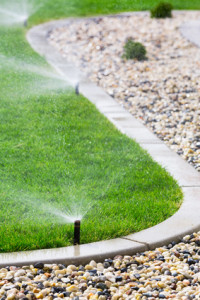 When it comes to keeping your landscaping looking lush and healthy, your sprinkler system design could make all the difference. If your plants are getting too much water you may encounter problems such as mold, rotting, and even yellowing of your plants. Likewise, if your plants are not getting enough water, they can quickly turn yellow and brown, dying back and leaving you with large dead patches in your garden.
When it comes to keeping your landscaping looking lush and healthy, your sprinkler system design could make all the difference. If your plants are getting too much water you may encounter problems such as mold, rotting, and even yellowing of your plants. Likewise, if your plants are not getting enough water, they can quickly turn yellow and brown, dying back and leaving you with large dead patches in your garden.
Sprinkler system design needs to meet all of your plants different water needs. This can be tricky, especially if you have different types of annuals, perennials, shrubs, and trees, grouped together throughout your garden. A small shrub may need water once a week, whilst the small annual flowers you have growing around the shrub may need to be watered daily, finding that balance can be hard.
Why Hire a Gardener or Landscape Team for Your Sprinkler System Design
There are many complexities when it comes to the best sprinkler system design for your garden, hiring an experienced gardener will ensure that your garden is having its exact watering needs met. Here are some of the things a good gardener will look for when it comes to sprinkler systems.
- When it comes to sprinklers there are many different types, choosing the right sprinkler head can make sure that your garden is getting the right amount of water, protecting your plants from too much or too little water. An experienced gardener or landscape expert will know which sprinkler head to use, in which areas of your garden.
- Water pressure needs to be considered when it comes to a sprinkler system, your water pressure should be evaluated and upgrades to the system should be made to account for either a lack of pressure, or too much pressure.
- Pipes will need to be placed throughout your lawn and garden. By having a professional design the pipe layout and lay the pipes, you can be sure that your current garden and lawn will be protected. You will also have peace of mind knowing that your systems pipe design will help you reduce your water usage, whilst providing your garden with the water it needs.
- When it comes to your sprinkler system design the placement of each sprinkler head is important. As previously mentioned there will be areas in your garden that need less water, while other plants or areas may need a lot of water on a daily basis. By accounting for run off, sprinkler direction, and which plants need more or less watering, an experienced gardener can place your sprinkler heads in the right position to benefit all plants in your garden.
- If you would like your sprinkler system design to be as low maintenance as possible, you may want a system that is automated. Hiring a gardener to design, install, and set up your system will make sure that your sprinkler system is running at a time that gives your garden the best chance of soaking up the water. This will make sure that you are not losing valuable water to the heat of the day, or causing disease to spread through your garden.
Contact Us Today for Your Sprinkler System Design
If you have been considering sprinkler system design for your home or business, contact our landscape maintenance company today. Our team of garden and landscape experts can help you get the best sprinkler system design, keeping your garden and landscape healthy no matter the season.


